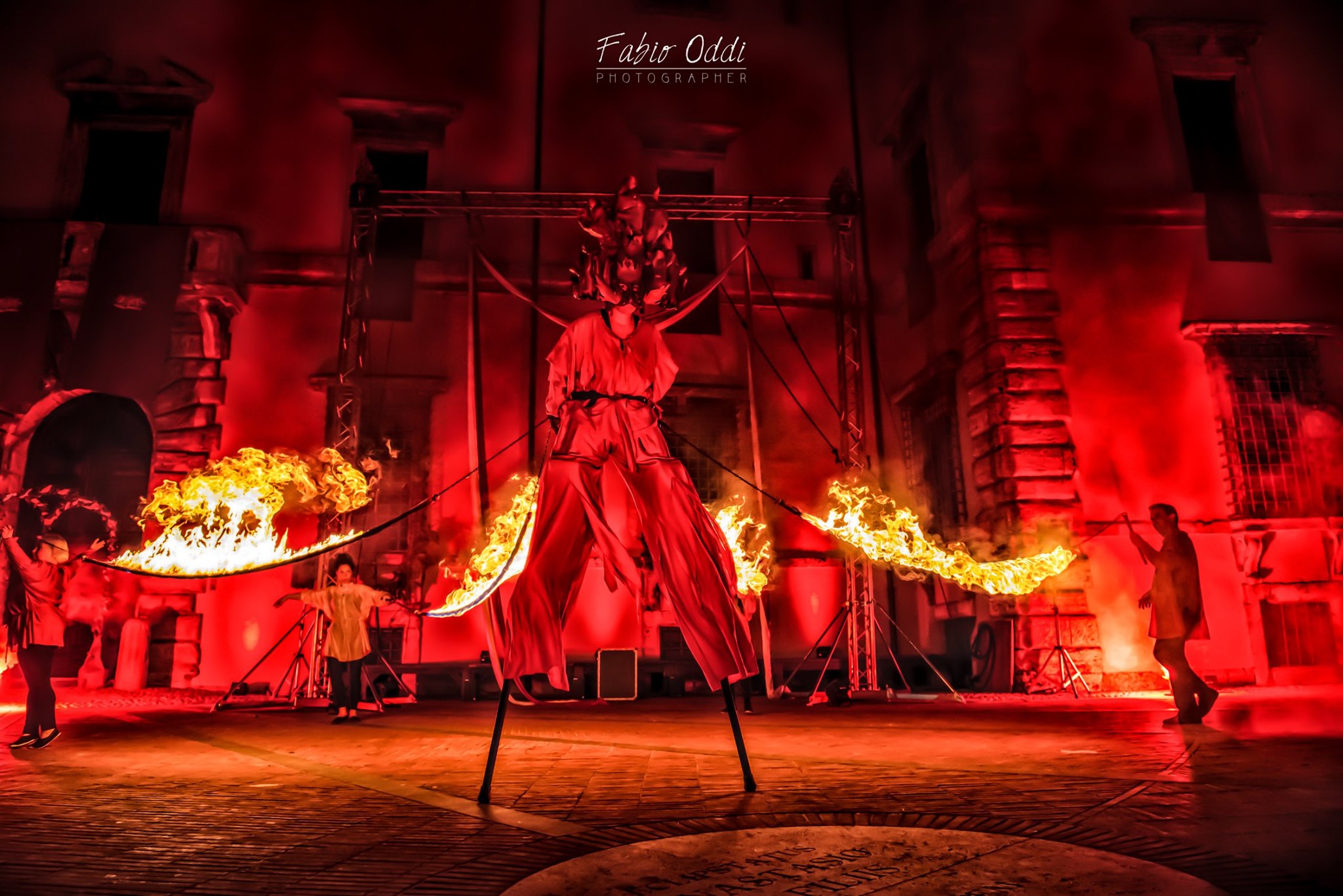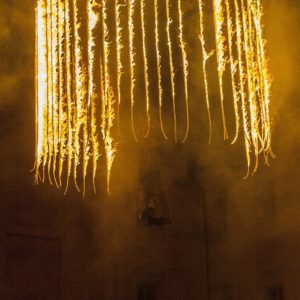Rituals and Symbols of Fire Through Time: A Journey Through History, Art, and Spectacle
Fire has always held a special place in human history. It is not just a chemical reaction but a universal symbol that has transcended centuries, evolving from a survival tool to the protagonist of rituals, myths, and, ultimately, spectacular fireworks. In this journey, we will explore how fire has been revered, feared, and used by humanity, eventually transforming into the pyrotechnic art we know today.
Fire has always had a dual nature: it destroys, yet it also regenerates. Cultures worldwide have imbued it with profound meanings. It has been seen as an element of purification and renewal, evident in medieval burnings or ritual bonfires marking a new beginning. In many traditions, sacred fire represents fertility and abundance, a symbol of rebirth. Always linked to divinity and spirituality, fire has served as a bridge between humans and the divine, with the sun, lightning, and eternal flames embodying its power. It is also an agent of transformation, capable of altering matter and marking the boundary between life and death.
From ancient times to the present, fire has accompanied humanity in its evolution. In prehistory, its discovery marked a revolutionary shift: from a simple source of heat to a tool for protection and cooking. In antiquity, fire gained sacred value and was used in religious and magical rites, as seen in Ancient Egypt, where effigies were burned in esoteric ceremonies. During the Roman era, it played a role in expiatory rituals like the sacrifice of the Argei, wicker figures thrown into the Tiber River. In the Middle Ages, fire was associated with purification and regeneration, as evidenced by tales of miraculous forges. With the Renaissance, gunpowder revolutionized the use of fire, leading to the first pyrotechnic displays. In modern and contemporary times, fire has lost much of its mysticism and transformed into a spectacular element, becoming a symbol of celebration and festivity.
The fireworks we admire on festive nights trace their origins to China around the year 1000, following the discovery of gunpowder. From there, they spread worldwide, first through the Arabs and later through the studies of thinkers like Roger Bacon and Vannoccio Biringuccio, who in the Renaissance began codifying pyrotechnic techniques. During the 17th and 18th centuries, European courts refined fireworks into a sophisticated art, while in the 19th and 20th centuries, pyrotechnics became increasingly elaborate, reaching today’s high-tech advancements.
Every fireworks display results from careful chemical study. The colors that light up the sky depend on specific compounds: strontium produces red, calcium orange, sodium yellow, barium green, copper blue, and a combination of copper and strontium creates violet. Over time, chemical components have been improved to ensure increasingly scenic and safe effects.
Today, fireworks are not just bursts of color but true works of art. During the Renaissance, theatrical stage machines were used to enchant audiences, a concept still found in modern pyrotechnic shows. Special effects, the interplay of lights, sounds, and movement create an immersive experience, while their expressive power can be used to convey symbolic messages and celebrate significant events.
Fire has always been with us: it has warmed, protected, frightened, and fascinated us. From a primordial element to a spiritual symbol, from an instrument of destruction to a breathtaking spectacle, it has left an indelible mark on our history. Today, when we watch fireworks explode in the sky, we are not just witnessing a show—we are celebrating a millennia-old bond between humanity and the flame.











